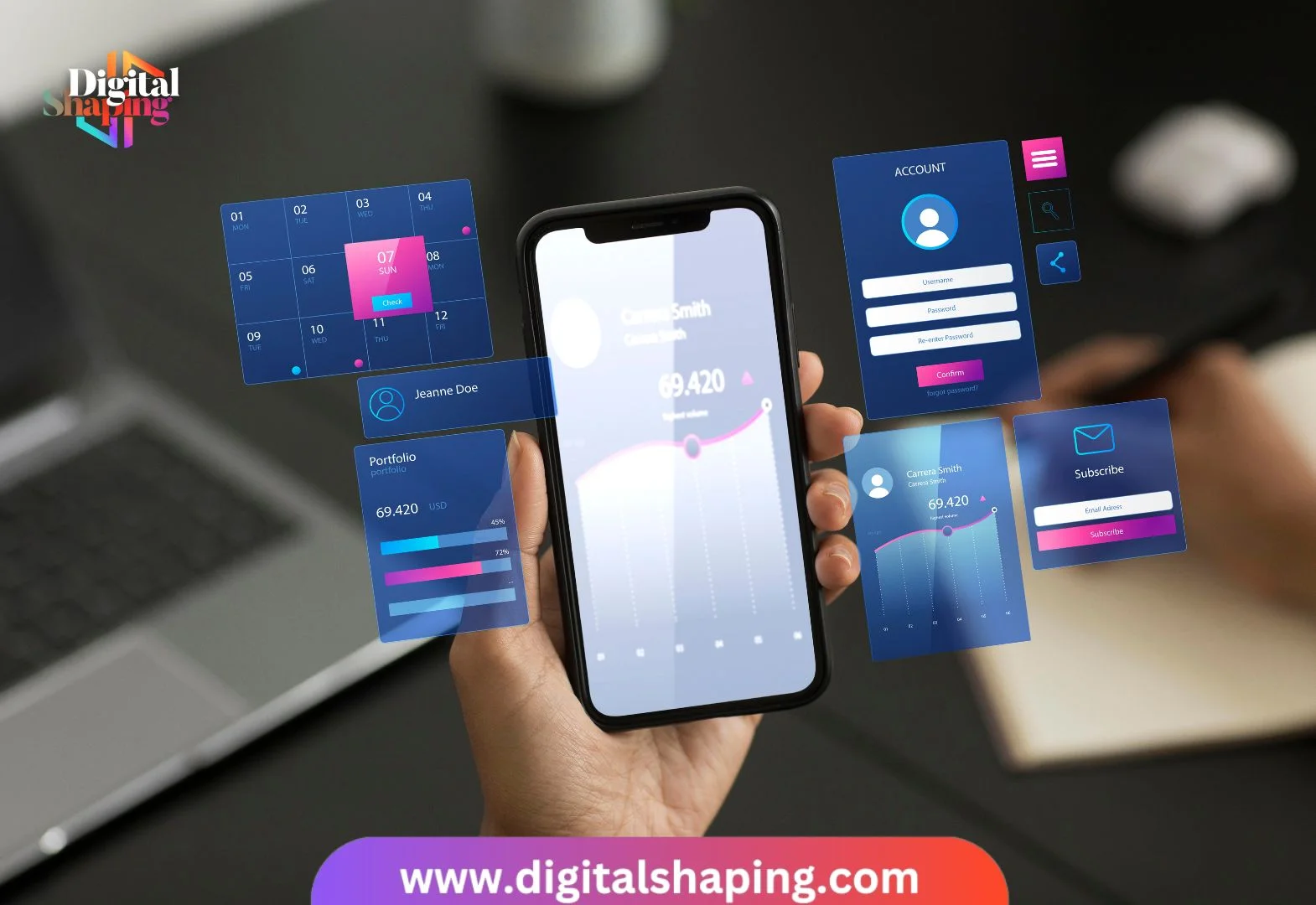When we talk about UI/UX design, most people picture sleek websites and polished apps. But the real value of UI/UX lies in its ability to serve something bigger: your business goals. Whether you’re trying to increase conversions, improve customer retention, or reduce support costs, the way your product looks and functions plays a critical role in reaching those targets.
If your design isn’t helping your business grow, it might be time to rethink how you approach it. Our UI/UX design services are built exactly for this—bridging the gap between great user experiences and real business impact.
What It Means to Align UI/UX with Business Goals
Alignment isn’t about making everything pretty. It’s about making sure your digital experience helps users do what you want them to do, without friction. That could mean:
- Encouraging visitors to book a consultation
- Helping users complete a purchase faster
- Reducing calls to your support team
Your design choices should be guided by what you want to achieve. If your goal is lead generation, then your contact forms, CTAs, and navigation should be optimized to support that.
Start by Knowing Your Goals
Begin with clarity. What exactly are you trying to achieve in the next 3 to 6 months? Are you:
- Trying to grow your email list?
- Aiming to increase sales of a specific product?
- Hoping to lower your bounce rate?
Once you know your goals, you can shape your design around them. A business looking to build trust might prioritize testimonial sections and security badges, while one focused on conversions might experiment with button placements and shorter checkout flows. In fact, aligning design with your content efforts—like described in our post on why content marketing matters for businesses in the USA—can also elevate overall engagement and build authority.
Understand Your Users Deeply
Your users are real people with needs, frustrations, and habits. The better you understand them, the better your design can serve them while also meeting your business targets.
Talk to your customers. Watch how they interact with your site or product. Use tools like heatmaps or session recordings. Are they struggling to find key information? Are they abandoning carts halfway through checkout? These insights tell you where design is failing to support your goals.
Translate Business Goals into Design Tasks

Here’s where things get practical. Let’s say your business goal is to reduce support inquiries by 30%. Instead of just hoping people find the answers they need, you can:
- Improve the visibility of your help section
- Add searchable FAQs or chatbot features
- Redesign onboarding flows to explain things better upfront
Each of these is a design decision that contributes to your target. When you can trace a visual or functional element back to a specific goal, you know you’re on the right track.
Use Metrics That Matter
Success should be measured, not assumed. If your design changes aren’t being tracked, it’s hard to prove their value. Choose the right metrics that tie UI/UX performance to business outcomes:
- Conversion rate for key pages
- Time on task or page
- Drop-off rates in user flows
- Number of support tickets submitted
We often incorporate Conversion Rate Optimization (CRO) strategies alongside UX design changes to ensure performance improvements are quantifiable and actionable.
Involve Key Teams Early
Great design is rarely done in isolation. Involve stakeholders from marketing, product, and customer support early in the process. Each team brings a different lens:
- Marketing knows the messaging and audience
- Product understands long-term features and limitations
- Support highlights common user frustrations
When everyone contributes, your design becomes more strategic and better aligned with real business needs.
Prioritize User-Centered Improvements
Every business has limited time and budget. So, prioritize changes that improve the user experience and meet your objectives. For instance:
- Simplifying navigation can improve time on site and reduce bounce
- Making forms mobile-friendly can increase signups
- Streamlining checkout can directly increase sales
For small business owners, improving UX often overlaps with social strategies. Our article on 10 social media marketing tips for small businesses shares how even minor design and messaging updates can significantly boost engagement.
Always ask, “How does this change help the user and the business?”
Test, Learn, and Refine
User behavior is constantly shifting. That’s why testing and iteration matter. Run A/B tests on different button colors, placement of CTAs, or the order of homepage sections. Gather both quantitative data and qualitative feedback.
Make small, smart changes and observe the results. When something works, apply the learning across similar areas. When it doesn’t, dig deeper to understand why.
Build for the Long Term

Good UI/UX isn’t a one-time project. It’s a process that evolves with your brand and users. Stay flexible. Keep checking in on how well your design supports your goals. Don’t be afraid to pivot if the data tells you something needs to change.
That’s where working with a team like ours at Digital Shaping makes a difference. We don’t just design experiences that look good. We create strategies that help businesses grow. Our process focuses on understanding your goals and shaping every part of the user journey around them.
Final Thoughts
UI/UX design is a business tool. When used well, it can drive conversions, reduce costs, and create happier customers. But it only works when it’s connected to what your business actually wants to achieve.
Think beyond design trends. Start with your goals. Build for your users. Measure everything. That’s how great design becomes great business.
If you’re ready to align your UI/UX with real business outcomes, we’re here to help. Let’s talk about how we can turn your design challenges into growth opportunities.]

